Search Results for Tag: Renewables
Ex UN-climate chief speaks out on Arctic drilling
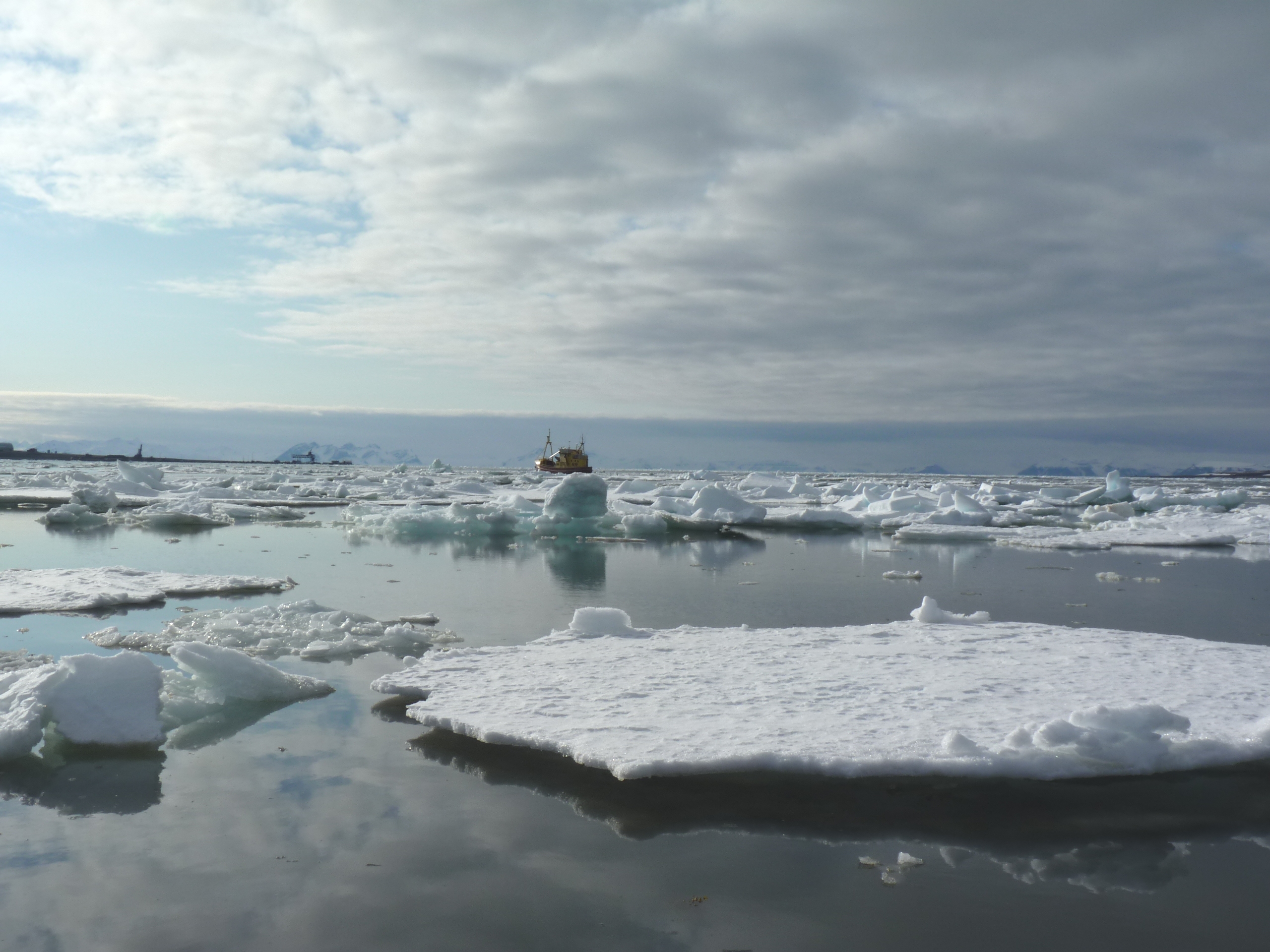
The Arctic:Physically more accessible – ethically a no-drilling zone (Photo: I Quaile)
One good thing about people no longer being in office is they are freer to come out with their own opinions. Former Executive Secretary of the UN climate secretariat UNFCCC Christina Figueres told Alister Doyle from Reuters this week that drilling in the Arctic was not economical and that warming was a threat to the environmentally fragile region. (Many thanks to the Arctic Institute for flagging that as top story in The Arctic This Week)
Passion versus diplomacy
I interviewed Ms Figueres several times when she was head of the UN climate secretariat here in Bonn. I always had the feeling she was passionate about climate protection and often wondered, as I did with her predecessor Yvo de Boer, whether they did not feel frustrated at the slow pace of climate action and the need to respond diplomatically and tread carefully on the minefield that is global geopolitics. With Yvo de Boer, that was certainly the case.
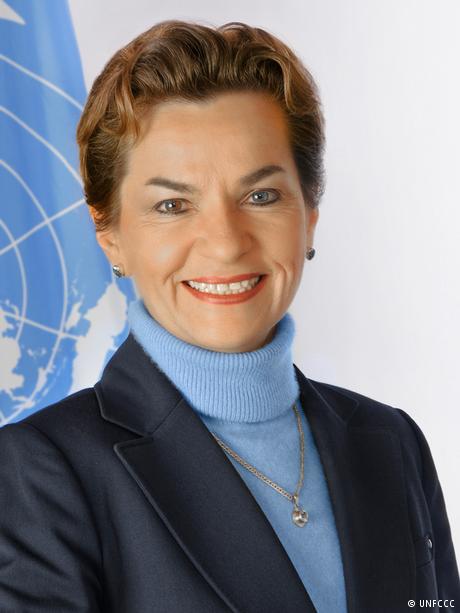
Christiana Figueres while still UN climate chief in Bonn
Back in 2014, ahead of the UN summit on climate organized by Ban-Ki-Moon, Christina Figueres told me in an interview that that mega-meeting was “an opportunity to show, to shine, and to start a race to the top, for everyone to realize that climate is not a one-sector or one company or one country issue, but an every man, every sector, every country issue. That is why it is such a broad invitation to all sectors, all countries, to come forward.”
Competition to halt climate change?
Wouldn’t it be fantastic to see countries racing to be the real climate champions? I would love to be able to say that has actually happened, but based on our global emissions to date and the failure of the latest working meeting in Bonn to make real progress in preparing this year’s climate conference in Poland at the end of this year, I do not have the feeling that there is a “race to the top” in cutting emissions and halting global warming.
The Trump factor
Clearly, one major factor in all this is the election of Donald Trump as US President. At that time, the UN climate chief told me “the second term of President Obama has seen an accelerated and upscaled engagement on climate change in particular. With the latest move of the Obama administration to ask EPA to come forward with regulations on power plants. That is probably the most ambitious action the US government has taken on climate change”.
What a disappointment to see the climate-sceptical US administration backpedaling on all of that and opting out of the Paris Agreement.
No action without catastrophe?
Figueres comes from Costa Rica, a country that she says is a model when it comes to climate action:
“Costa Rica has had a carbon tax for over 20 years, it has internalized the cost of this, and so is one of the countries to which many countries are looking a) for the carbon pricing model we have, also for the system we have of environmental payment for services, which we pioneered in Costa Rica and which is being used in other countries. It’s a country that doesn’t mind experimenting, is very risk-friendly and has actually benefitted from a these forward-leaning policies particularly with respect to the environment and holds a high repute amongst other countries.”
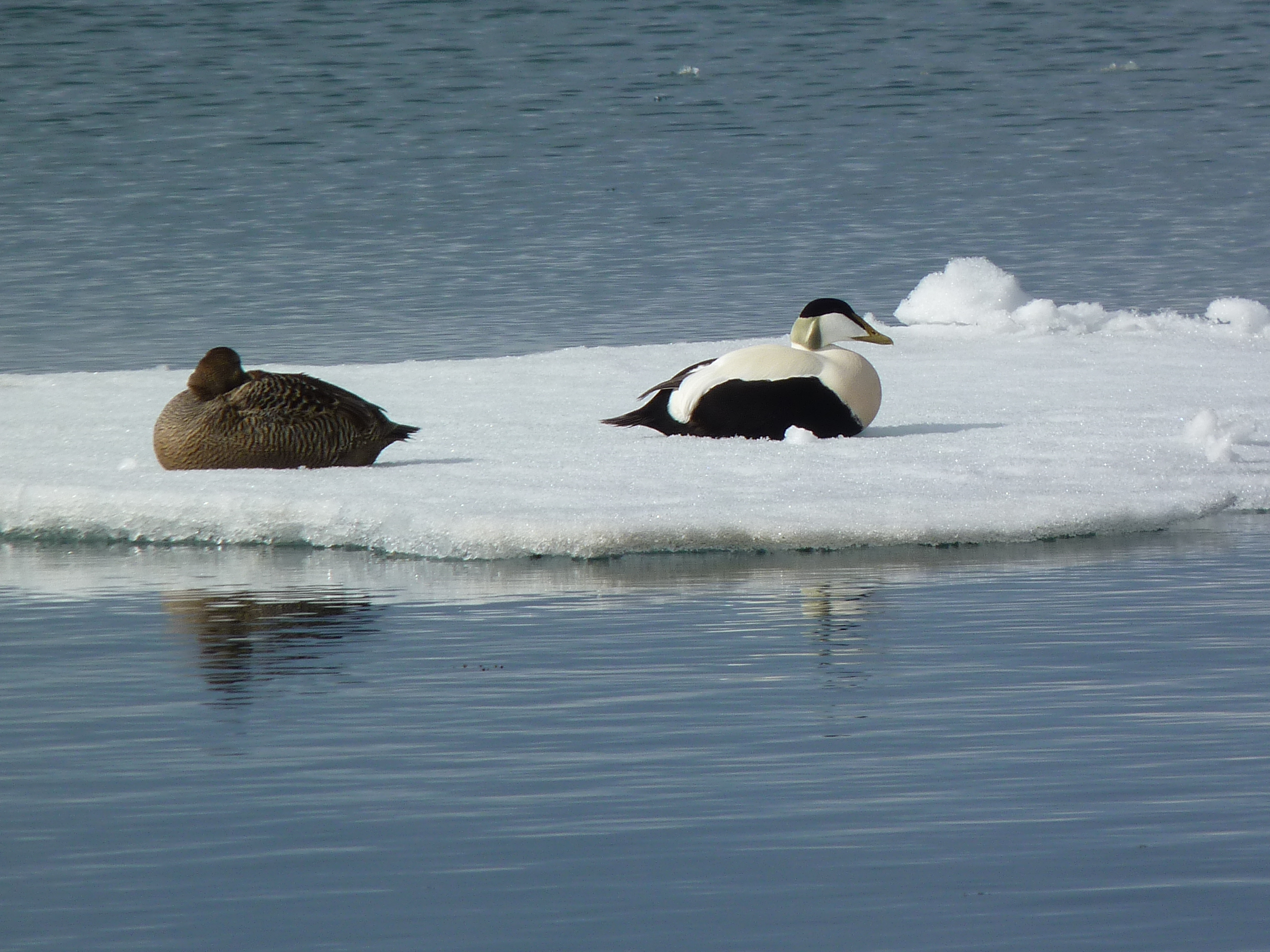
Global climate policy – all afloat? (I.Quaile)
Alas, there have not been many others following the Costa Rican path.
“They have a front-row seat to the havoc climate change is already causing. No wonder they’re moved to action” Katie Quirk wrote in an article for Slate last year. If it is catastrophic impacts that fuel climate action, we may not have all that long to wait.
Now we have had several years of record global temperatures and Figueres says the heat is threatening “everything from Australia’s Great Barrier Reef to ice in Antarctica”.
And “the Arctic has been rendered undrillable,”she told Reuters.
Paradoxically, the easier access to our icy north becomes, the more difficult it becomes to justify commercial activities up there from the point of view of stabilizing the world’s climate.
Yet there are still governments and companies who think it worth drilling in the Arctic. President Trump’s administration is even considering drilling in part of the Arctic National Wildlife Refuge.
Figueres says global emissions should peak by 2020 – a target now highly unlikely to be reached in that short a time.
At the same time, searching for oil and gas in the Arctic would “take years to develop any finds”, she says, suggesting the money would be put to a better use developing renewable energy.
“The stakes are visibly higher than they were just a few years ago,” she said in the recent Reuters interview. Indeed, and they are rising all the time.
Arctic sea ice low as UN delegates talk climate in a sweltering Bonn.
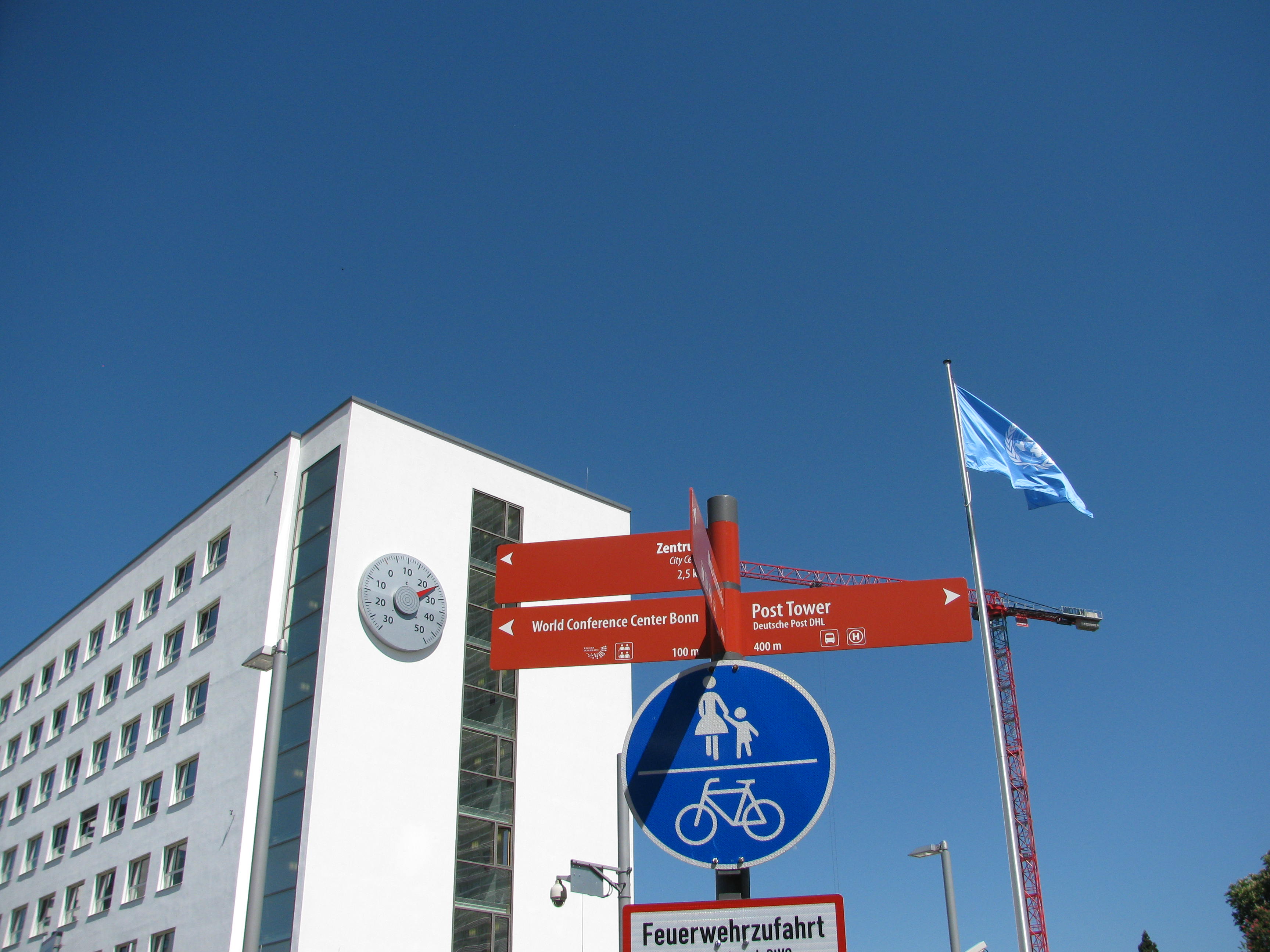
Blue skies, temperature rising at UN climate headquarters in Bonn
It’s been a scorcher of a week here in Bonn. Delegates to the UNFCCC climate talks (one of the interim meetings to prepare the big COP24 which will take place in Katowice, Poland, in December) have been experiencing non-stop sunshine and temperatures up to 30 degrees Celsius. It feels like the height of summer here, although we are only at the beginning of May.
How appropriate as a backdrop to a meeting that is trying to work out the nitty gritty of actually fulfilling the Paris Agreement commitment to limiting global warming to 2 or preferably 1.5 degrees C warming.
“Currently we’re heading for 3 degrees C of warming rather than the 1.5 degrees C agreed in Paris, and the window of opportunity to reverse this is swiftly closing,” was the comment from Jens Mattias Clausen from Greenpeace Nordic.
Sea ice on the wane (again)
Coming back to work after a long break, a catch-up look at twitter, #Arctic drew my attention first to a tweet from @ArthurWyns telling me “next week it will be 20°C warmer than usual on the #Arctic!!!”
Then came one from @ketil_Isaksen, about one of my own favourite Arctic places:
“Unusually early, extensive and rapid snow melt on #Svalbard releasing extreme melt water discharges in the valleys. +6°C and strong breeze today in #Longyearbyen (78°N)”
In Arctic Today, Yereth Rosen has an article telling us this year’s Arctic sea ice melt season is “off to an unusually fast start”, and provides some worrying data from the NSIDC.

Melting ice off Svalbard (Pic I.Quaile)
Still working out the rules
Given all this, I can well understand why a lot of people involved in the talks in Bonn are feeling frustrated at the slow progress being made.
The delegates are charged with finalizing the rules for the actual implementation of the Paris Agreement. You can be forgiven if you thought things had already moved beyond that stage.
Yes, the wheels of international climate diplomacy move very slowly.
At a press briefing organized by the Climate Action Network (CAN), Li Shuo, a Senior Climate & Energy Policy Officer with Greenpeace stressed: “This is a mini Paris here. We really are trying to finalize all the detailed rules for the Paris Agreement. That’s a daunting task.”
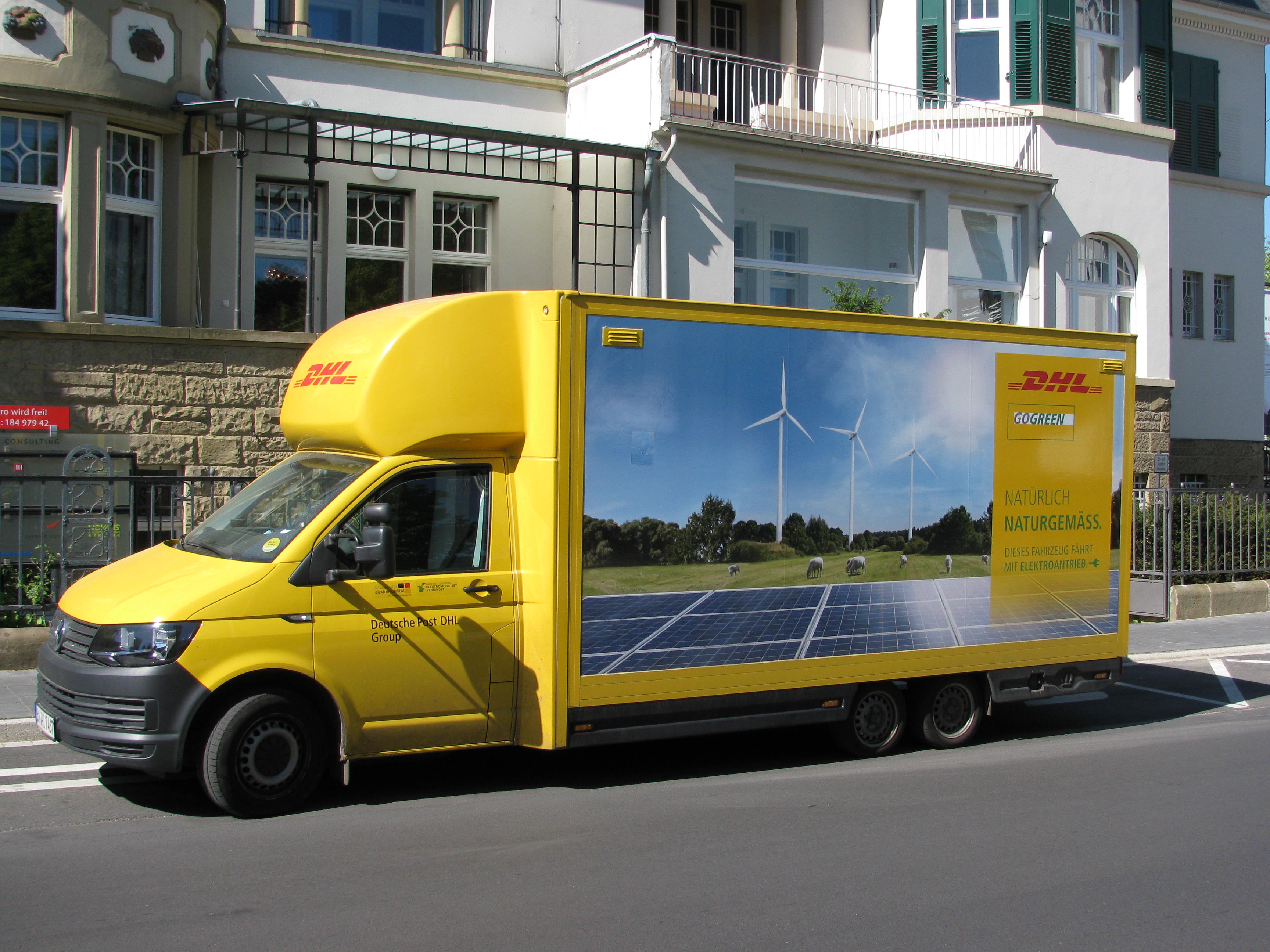
Climate-friendly electric lorry in Bonn (assuming it’s not running on coal-powered electricity?) (I.Quaile)
The Polish dilemma
The next COP at the end of this year will be held in Katowice, the heartland of Poland’s coal industry. Wouldn’t it be fantastic if that turned out to be a turning point in the transition away from fossil fuels to renewable, climate-friendly forms of energy? The city itself says it wants to go green, as one of our correspondents reported in the latest edition of my radio show Living Planet. But, alas. There are absolutely no signs that the Polish government is planning to change its policy any time soon.
“We have seen worrying signs that the Polish presidency thinks that it will sufficient just to get some kind of rulebook,” said Alden Meyer, Director of strategy and policy for the Union of Concerned Scientists, also at the event organized by CAN.
He went on: “We don’t have to wait for the IPCC special report in October to know that what’s on the table and being implemented falls far short of what’s needed to reach the temperature goals countries agreed to in Paris.”
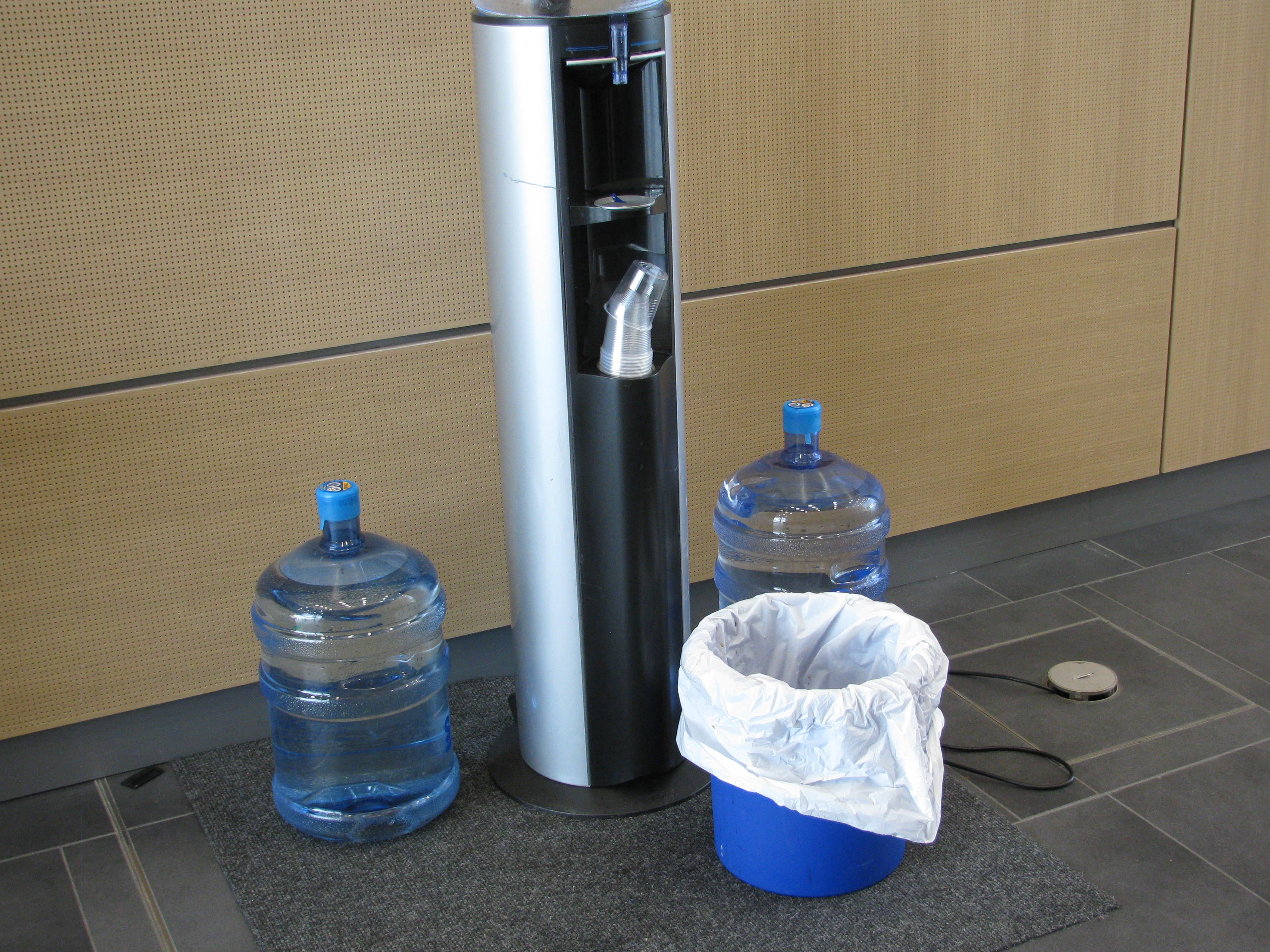
PLASTIC bottles, plastic cups for water? Yes, at the UN climate conference. (I.Quaile)
Coal and climate
I asked him how he saw Poland’s stance on all this at the moment. In spite of the government’s support for coal and reluctance to see to see the EU step up its goals, he stressed that “the role of the presidency is to put their domestic considerations aside and operate on behalf of the entire world community”.
Well, we can try to be optimistic.
“We retain some hope that Poland in its role as the presidency will be different from Poland in its role within the European Union and in its domestic energy policies”, said Meyer, they have to ensure that “the first review of the Paris Agreement, actually triggers much stronger climate commitments”.
Li Shuo noted that Poland was rather late in “shaping up their team” for the climate conference.
“There’s really no clarity from the incoming Polish presidency on how they plan to deal with the political process at Katowice. So we need to hear more from Poland”, he told me at our meeting.
The state of play
When I hear after a week and a half of a two-week working meeting that some progress has been made on technical issues of implementing the rules of the climate agreement, it does not make me feel confident that the international community is going to meet the emissions targets on time. “Other discussions are really stuck because of political differences”, said Li Shuo – mostly relating to the INDCs, or “nationally determined contributions”.
Concerned scientists’ representative Meyer reiterated the urgent need for progress on adaptation, with a lot of climate impacts already being felt: “No matter how successful we are on meeting the Paris temperature limitation goals, those impacts are going to continue to mount over the next several decades because of inertia and momentum in the climate system”.
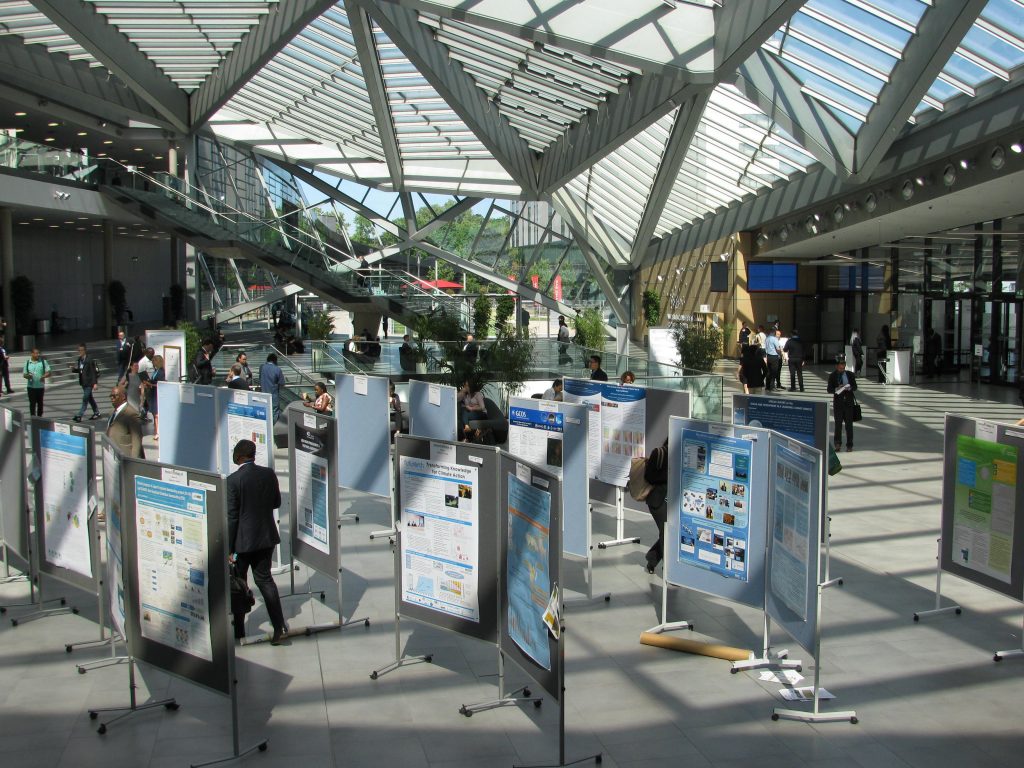
A maze of science! Good to see it at the Bonn gathering. (i.Quaile)
What happens in the Arctic…
That would also apply to the Arctic region, where temperature rise is not only completely altering things for people and nature up there – it is also changing weather patterns and ocean circulation, with severe implications for the whole planet.
“What is missing is leadership and guidance, especially coming from the presidency”, said Li Shuo. And the spectre of another President is also hovering over the Bonn talks.
However, the Polish government has been preparing for the end-of-year climate extravaganza in other ways. It has passed a bill specifically for the UN summit which bans all “spontaneous gatherings” in the southern coal-mining city of Katowice between November 26 and December 16, which covers the entire period of the conference. It also submits registered participants to government surveillance and allows authorities and police to obtain, collect and use personal data of attendees without their consent or judicial oversight.
We’re still trying to get an official UNFCCC statement on that one. Good ground for getting the whole world on board to halt climate change?
Why Africa has to worry about melting Greenland ice

Equi glacier discharging into the sea off Greeenland (Pic. I.Quaile)
Working for an international broadcaster which has Africa as one of its key target groups, I often find it difficult to interest some of my colleagues in what is happening in the Arctic. So my attention was caught instantly when I came across an article by Chelsea Harvey in the Washington Post: A climate chain reaction: Major Greenland melting could devastate crops in Africa.
![]() read more
read more
Cheap oil from the Arctic? Fake news, says climate economist Kemfert

Nothing fake about melting ice. Eiders, off Svalbard (I.Quaile).
This week I came across an interesting publication about to come on to the German market.
“The fossil empire strikes back” (Das fossile Imperium schlägt zurück) is the translation of the catchy title of a new book in German by Professor Claudia Kemfert, head of the department of energy, transportation and environment at the German Institute for Economic Research in Berlin (DIW Berlin,) and professor of energy and sustainability at the Hertie School of Governance, in Berlin.
She has also acted as advisor to the German government, the European Commission and is on the steering committee of the renowned Club of Rome.
A fossil fuels revival: happening now, or alternative facts?
I called her up to record an interview for our Living Planet radio show to find out what was behind the headline, and the sub-title: “why we have to defend the “Energiewende” (energy transition) now.
Prof Kemfert believes the fossil fuels sector is really working hard at making a comeback. That, she says, is not fake news, but the fossils lobby makes use of the latter in its attempt to turn the clock back in terms of energy production.

Kemfert argues for renewables. Copyright: Neuberg, Sebastian Wiegand
While the global transition towards renewable energy has been successful in recent years, with the costs of alternative energies reduced, the Paris Agreement signed and ratified, now, she says, the fossil fuels sector is striking back.
She says they do it by spreading fake news, creating myths about restrictions on cars, speed limits, blackouts, globally, but especially in the USA under the Trump administration. So, she argues, we have to defend the energy transformation. The window of opportunity for climate action is still open, but we are losing time.
The power of fake news
Kemfert’s aim is to debunk the myths, which she is convinced are being used to give renewable energy a bad image. Some of the examples she cited to me are false claims that renewables are more expensive, or that reliance on alternative energies will mean blackouts.
“This has never happened in Germany”, she notes, the country that gave the “Energiewende” its name and pressed ahead with the transition to renewables in recent years.
So how can fake news of this kind make such an impact that Kemfert and other like-minded experts are worried about an oil and coal revival?
“If you repeat this all the time, and repeat it on social media, people think it’s true”, she told me.
“The danger is that they can be successful”.
“The global energy transition is in danger”, she is convinced. “We are losing time to bring greenhouse gases down and help the planet to survive.
“The lobby of the fossil empire is extremely strong… the whole campaign with myths and fake news is really successful, because a lot of people believe what they say”.
So are the fossil fuel lobbyists just better at getting a message across than the other side? There could be something to that, Kemfert agreed. She says the “green lobby” is not aggressive enough. People think “we are the good ones, the energy transition comes by itself”- this is not true. Now it’s time to fight for it”.

We still have a window of opportunity, says Kemfert (Pic. I.Quaile, Alaska)
Time to march?
She calls on all scientists and people who want to protect free and democratic science, to take part in the Marches for Science, planned to take place round the globe on April 22nd.
Of course I wanted to know how she thought the global counter-attack by the “fossil empire” would impact the Arctic.
Yes, she said, this push for a fossil fuels revival could provide additional motivation to those who would like to push ahead with Arctic drilling, as climate change makes for easier and less expensive access:
“There are some aggressive industries, especially coming from the oil and gas sector, who have interest to drill for oil in the Arctic region.
For them, she says, easier access thanks to climate change would be “a nice, so-to-say side effect”.
But for the planet as a whole, climate change is so dangerous that any potential short-time business benefits are just not worth thinking about, says Claudia Kemfert:
“As a climate economist, I cannot say this (oil from the Arctic) makes economic sense, because the costs of climate change are much higher than lower costs, for example, for drilling oil in the Arctic. The costs of global climate change are so high that it cannot outweigh the cost reduction of oil drilling in the Arctic when there’s low ice. We have to move away from oil and gas, this is why it’s more economically efficient to go for an energy transition instead of drilling in areas where we have climate impacts, we are causing environmental difficulties and where we know that burning these fossil fuels will create climate change. That’s really the wrong way to go”.
Kemfert’s book is only being published in German at the moment, but there is more info on her home page, and a longer version of the English interview I conducted with her will be coming up soon on Living Planet and on the DW website.
Finland courts US rivals Russia and China in bid for key role in Arctic power game

China has its own Arctic research station on Svalbard. (Pic. I.Quaile)
Finland does not often make its way onto the international news agenda, but as the country prepares to take over the presidency of the Arctic council from the USA next month, it succeeded twice over the past week. Firstly, the country’s President offered to host a meeting between Russian President Putin and US President Trump. Then Chinese President Xi Jinping flew in on a state visit on his way to a meeting with Trump.
Tackling the summit
At a forum in the northern Russian city of Arkhangelsk last Thursday entitled “The Arctic: Territory of Dialogue”, Finland said it was willing to host a high-level summit meeting during its two-year presidency and would be happy to receive the Russian and US Presidents in Finland.
In his statement, the Finnish leader stressed that “the geopolitical tensions in other parts of the world should not be allowed to spill over to the Arctic. Cool heads are needed to keep the Arctic an area of low tensions also in the future.”
Under the chairmanship slogan “Exploring Common Solutions”, he said “we want to highlight the need for constructive cooperation between all Arctic stakeholders. Also, we believe it is time to take the Arctic cooperation to a new level. Finland proposes the convening of an Arctic Summit to discuss a wide range of issues pertaining to the region and beyond. This would provide an opportunity to ensure that the Arctic indeed remains a territory of dialogue”.
Heather Exner-Pirot, Managing Editor of the Arctic Yearbook, was scathing about the Finnish move in a blog post for Eye on the Arctic. She says Finland has been floating the idea of such a summit at least since 2010.
“But after meeting with Barack Obama in May 2016, Niniistö seemed to abandon such plans, calling the timing “inappropriate” given the international political situation. That was short-lived. Niniistö once again revived the idea in his first telephone call with now President Trump, in December 2016.”

Go for the summit or work from base camp? (Greenland, Pic. I.Quaile)
Stick to base camp?
Exner-Pirot finds it “bewildering” that the current situation could be considered more appropriate than they were a year ago.
“Niniistö may not have noticed, but the Trump Presidency is in crisis, a political dumpster fire, not least because it is under investigation for inappropriate ties to Russia during its 2016 Presidential campaign. Any meeting of Trump and Putin under the current political climate would be a circus.”
She says Finland has not put forward any convincing reasons to host such a Summit, and that the usual biannual Arctic Council Ministerial, which will take place next month, is an adequate regular platform to address high level Arctic issues amongst the Arctic states’ Foreign Ministers.
“The Trump Administration has proffered no position on Arctic affairs except, tangentially, to cast doubt on the anthropogenic contributions to climate change; it is hard to imagine more sophisticated or constructive discussions arising from an Arctic Summit.”
She argues for continuing “compartmentalization” as a guiding principle in regional Arctic politics, keeping environmental issues and development “insulated from the destabilising fluctuations that occur within the broader international system.”
Cooperation with Russia is “rational and necessary”, Exner-Pirot concludes, but “inviting Trump and Putin together for an Arctic Summit flagrantly violates this strategy. Instead, it invites drama and uncertainty into Arctic politics at a time when multilateral efforts are progressing quite smoothly; an all-risk-and-no-reward scenario. This is not the Arctic way. Cooperation with Russia in the Arctic must continue. But the proposal for an Arctic Summit should be shelved.”

Easier access necessitates close cooperation to cope with more traffic in the High North (I.Quaile)
Nice try?
While there is much to be said for tackling issues at lower levels – can you blame Finland for making the most of its central role at the helm of the Arctic Council? It is surely natural for a country in this position to offer a stage for a high-profile meeting of these two world leaders – perhaps especially when it seems unlikely in the present circumstances.
At any rate, it will only happen if the two key players feel it could be to their advantage. The very prospect certainly ensured considerable news and public attention for the incomimg Arctic Council Presidency.
Finnish President Sauli Niinisto back-pedaled a little later, saying the nation was unlikely to hold an Arctic summit at short notice, cooling media excitement at the prospect of an early meeting between US President Trump and Putin.
For his part, President Putin said he was willing to meet Trump in Finland, but “he would wait longer if needed”, the news agency AP reported: “We are waiting for the situation to normalize and become more stable. And we aren’t interfering in any way.”
With a US congressional investigation of possible links between the Trump election campaign and Russia underway, the jury, presumably, can said to be “still out” on that one.
Ultimately, insulating the Arctic from the tensions of international politics as Exner-Pirot suggests, seems like wishful thinking.
There is evidence enough that Russia has been moving to increase its military presence in the region. In a feature for Reuters published January 30th, Andrew Osborn wrote Russia was “again on the march in the Arctic and building new nuclear icebreakers.”
Osborn describes this as “part of a push to firm Moscow’s hand in the High North as it vies for dominance with traditional rivals Canada, the United States and Norway as well as newcomer China.”

The Chinese lion is claiming its space in the Arctic. (Svalbard, Pic. I.Quaile)
Based on interviews with officials and military analysts and reviews of government documents, Osborn concludes that Russia’s build-up is the biggest since the fall of the Soviet Union and that it will “in some areas, give Moscow more military capabilities than the Soviet Union once had.”
He continues “under President Vladimir Putin, Moscow is rushing to re-open abandoned soviet military, air and radar bases on remote Arctic islands and to build new ones, as it pushes ahead with a claim to almost half a million square miles of the Arctic.”
The article was written after a tour of the Lenin, a Russian icebreaker now functioning as a museum in Murmansk. This week that name popped up again in a story in the Barents Observer by Thomas Nilsen entitled “FSB fears terror at nuclear installations in Murmansk region”.
The topic was on the agenda at a conference on board that same museum icebreaker in Murmansk the day after the metro attack in St. Petersburg.
The conference was entitled “Improving antiterrorist protection of civilian and military nuclear power facilities, preventing acts of nuclear terrorism”.
Nilsen points out that there are few places in the world with more operational nuclear reactors than the Murmansk region.
So is there a link between the Arctic and possible terrorist attacks by “Islamic State”, suspected by Moscow of being behind the St. Petersburg attacks?
Nilsen quotes Oleg Gerasin, head of the Russian intelligence bureau FSB in Murmansk region, explaining that ships from Russia’s Northern Fleet have been taking part in “antiterrorist operations in Syria.”
This demonstrates once more the inter-connectedness of the world today. With all due respect for essential multilateral cooperation on a wide range of issues at lower levels, across the board, ultimately the nature of politics in a globalized world can necessitate participation at the highest leadership level and lend symbolic significance to top-level summits. And that can apply especially if they can be brought about in times of strained relations and global risks.

The view from above can be useful (Greenland, Pic. I.Quaile)
Chinese ties
This week also saw Chinese leader Xi Jinping pay a visit to Helsinki, on the way to his tensely awaited meeting with US President Trump. This was only the second ever visit to Finland by a Chinese leader, although Xi himself visited in 2010 when he was vice-president. Niinistö made an official visit to China in 2013 .
Finland opened political ties with China in 1950 and Chinese state media were keen to stress that Finland was the first western country to sign a governmental bilateral trade agreement with Beijing.
Xi said in a statement there was “great potential” for future bilateral trade ties. He stressed that “over the past 67 years of diplomatic ties, the China-Finland relationship has enjoyed steady and sound growth despite the changing international landscape”. China is Finland’s fifth largest trading partner and Xi said he saw “great space and potential for further economic cooperation and trade”.
During the visit, Finland became the latest to benefit from what the news agency AFT describes as “Beijings famed panda diplomacy”. A pair of giant pandas will be leased to Ahtari zoo in central Finland, where a new panda cage costing more than eight million euros is being constructed.
So while President Trump warned talks with Xi would be “very difficult” – the US deficit with China rose to 31.7 billion $US in February – Finland was stepping up its game, cultivating non-Arctic nation China. China has observer status at the Arctic Council and a strong economic interest in making use of shorter sea routes from Asia to Europe and the USA through the Arctic, with climate change making access easier, although relatively high transit costs and unpredictable ice cover still limit its attractiveness. Beijing is keen to gain footholds in a region it sees as key for the future.
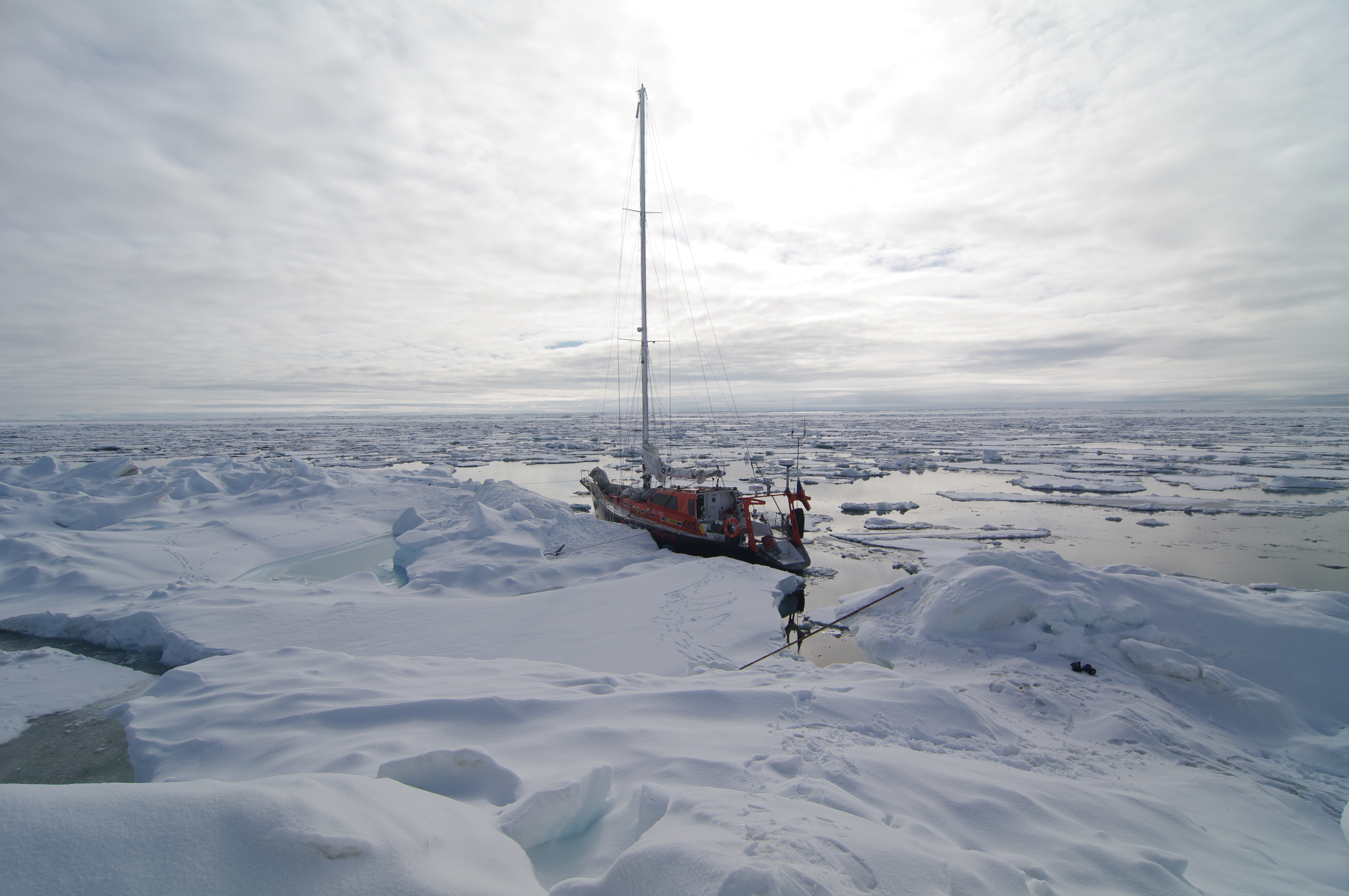
The Russian Peter 1 was the first sailing boat to cross the North Pole unaided in 2010 http://www.rusarc.ru/
China is starting to build its own icebreakers. New icebreakers could allow year-round navigation in the 2020s, Grigory Stratiy, deputy governor of Murmansk Region told Reuters.
China is leading a “Belt and Road Initiative” (BRI), a $5trillion plan to upgrade infrastructure between Asia and Europe. So far, Russia is the only one of the eight Arctic nation states to be a BRI partner. China, which has partnered heavily with Iceland in recent years, is keen to get the Nordic nations on board.
In the statement issued after the visit, China and Finland stressed two key over-arching issues:
“Both sides are committed to working together to reduce or limit greenhouse gas emissions, promote sustainable development and strengthen climate change adaptation and mitigation efforts.”
The two partners “shared the view that economic activities in the Arctic area should take into full consideration the protection and sustainable use of its natural resources. The two countries will intensify economic and technological cooperation in the fields of arctic marine industry, arctic geology, marine and polar research (including polar weather and sea ice monitoring and forecast), environmental protection technology, shipping and maritime safety, including vessel monitoring and reporting, ICT and tourism.”
A wide-ranging and ambitious spectrum.
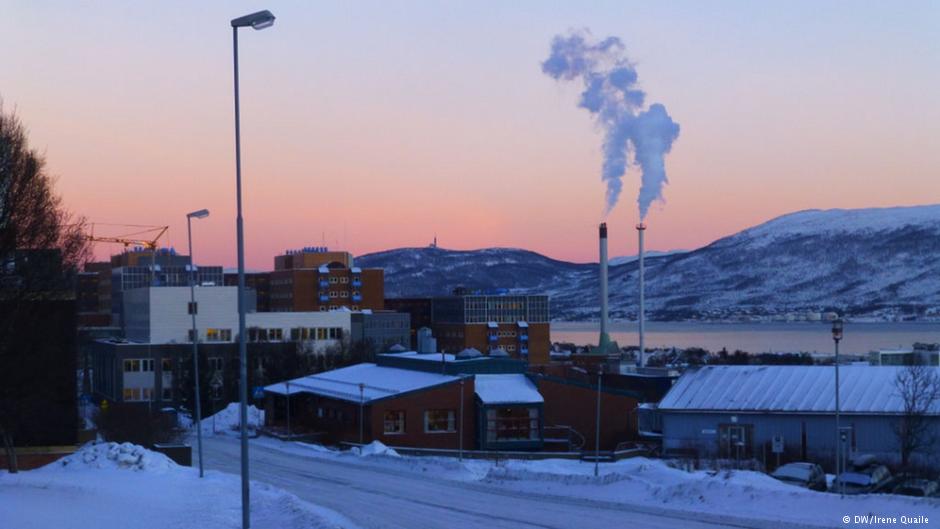
Get rid of those emissions (Arctic Tromsö, Pic. I.Quaile)
Meanwhile, on the global climate action stage, China seems set to benefit from the backward-looking policies of the Trump administration, positioning itself as a new world leader. At home pollution, drought and desertification are causing increasing problems for Beijing. To ensure peace and food security and avert unrest, a switch to renewable energies is essential. Beijing has also recognized their economic potential. At the same time the country can polish up its international image by taking on the role of climate leader while Donald Trump advances to environment and climate public enemy number one.
While it leads the global move to halt climate change, China is positioning itself to exploit the impacts global warming has already had on the Arctic. Given the current state of the global climate and the slow progress towards keeping to the two-degree let alone 1.5 degree upper limit for global warming, the Arctic is unlikely to re-freeze in the near future. Full speed ahead for Arctic development?
The Arctic Council has to be the body that controls what is happening in the High North and coordinates protection of the fragile Arctic environment.
As President of the body for the next two years, Finland has the opportunity – and the responsibility – to make its influence felt.
As far as the first meeting between the Russian and US-American “big men” is concerned, Finland just might have to pass. Finnish leader Niinistö had to admit to a news conference:
“The G20 meeting in Germany will likely be the first meeting for presidents Trump and Putin”, (July 7 and 8.)
Watch this space.




















Feedback